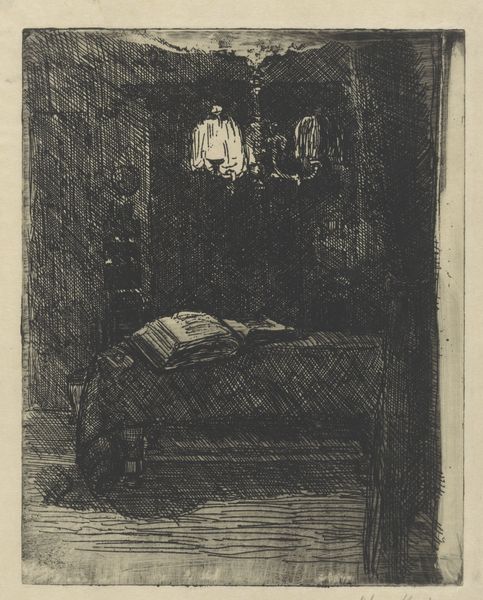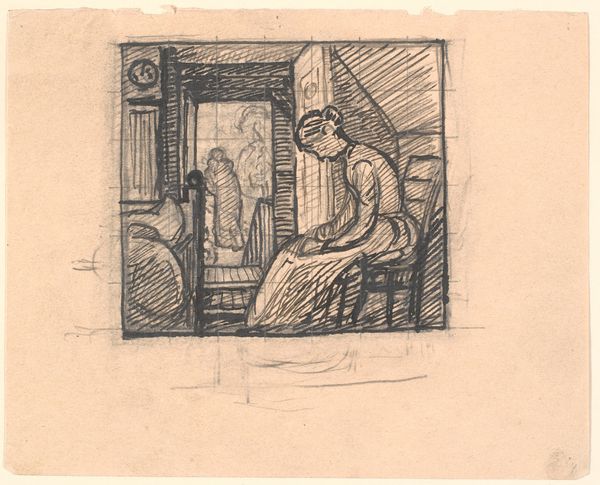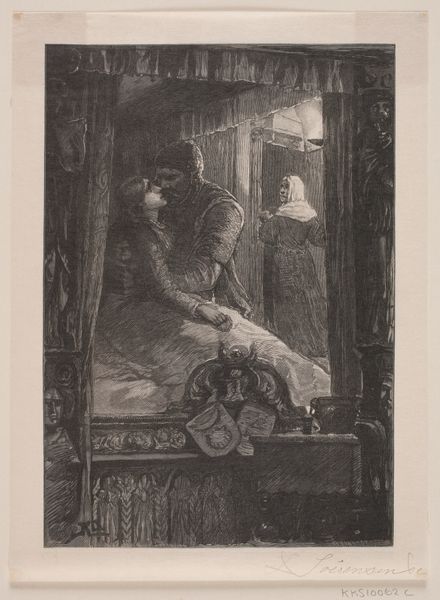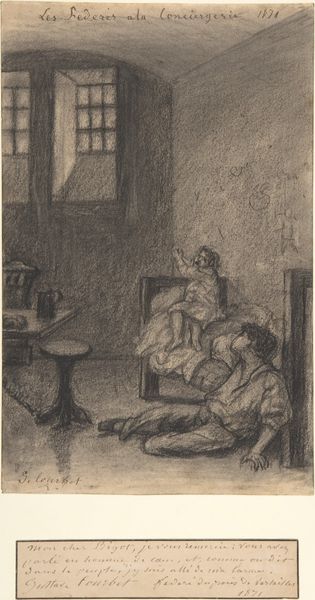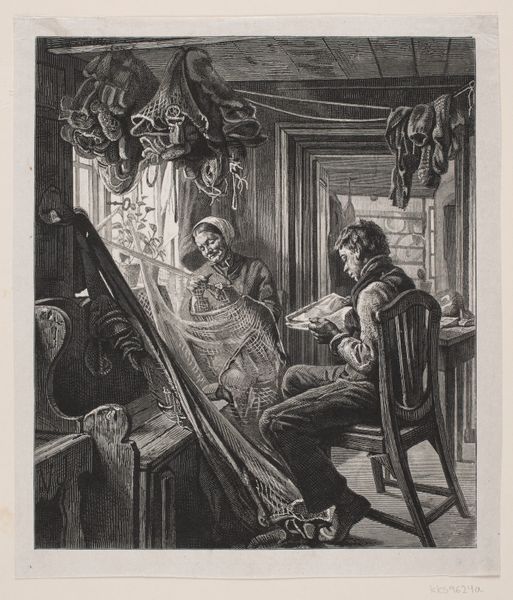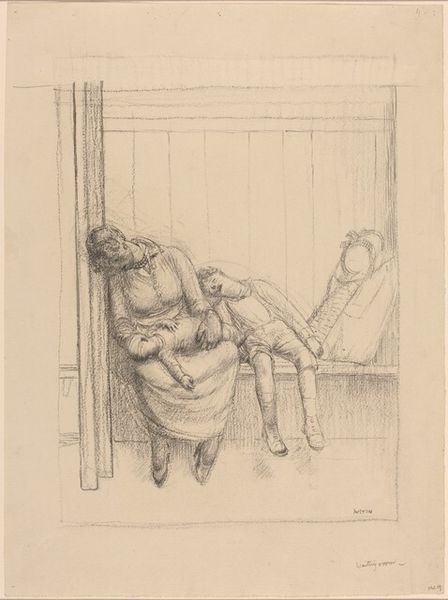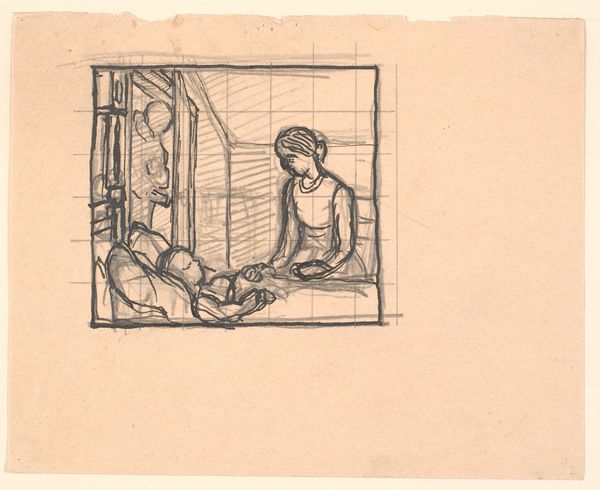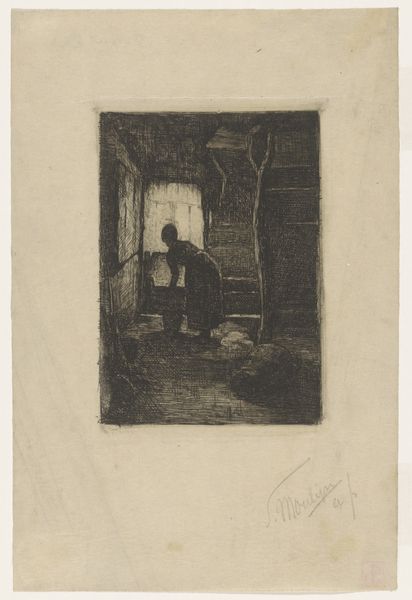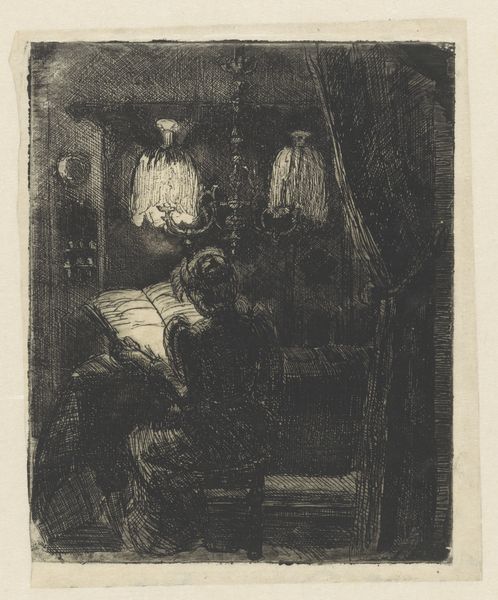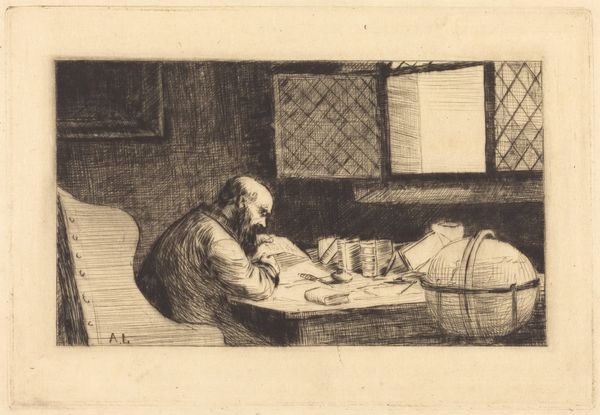
Og Moderen så ned i sit Skød, og tårerne løb hende over Kinderne... 1898
0:00
0:00
Dimensions: 329 mm (height) x 374 mm (width) (bladmaal)
Editor: This is "Og Moderen så ned i sit Skød, og tårerne løb hende over Kinderne...", created by Fritz Syberg in 1898 using ink and pen. I'm struck by the intimacy of the scene, but also the overwhelming feeling of sorrow radiating from the woman. What contextual elements do you feel are essential in understanding this piece? Curator: This drawing speaks volumes about the social climate of Syberg’s time. It's crucial to recognize the prevalent role of women in late 19th-century Denmark. The title, which translates to "And the Mother Looked Down at Her Lap, and the Tears Ran Down Her Cheeks...", along with the visible poverty and isolation suggests a commentary on the limited agency and potential hardships faced by women, particularly mothers, in that era. Does the man at the doorway evoke a particular feeling for you? Editor: I see him as almost looming and ominous, blocking the only real light source. He’s bundled against the weather. Could he be a representation of social expectations weighing her down, coming in from the cold harsh world outside? Curator: Precisely! And consider the setting – the humble interior, the starkness of the winter scene outside. This isn't just a personal portrait of grief. Syberg’s choice to depict this in a genre scene calls attention to broader socio-economic conditions. This aligns with a trend of social realism in art that sought to expose the realities of life for ordinary people. Notice also how this narrative of melancholy aligns with larger European Symbolist trends which are a reaction against the Industrial Revolution. Editor: It's interesting to think how art acts as a historical mirror. I initially focused solely on the emotion of the figure. I’m seeing a strong visual statement about a societal ill. Curator: Exactly. Art gains power by engaging with and questioning dominant social forces. Syberg invites us to empathize with and analyze this mother’s predicament. That awareness fosters change, even a century later.
Comments
No comments
Be the first to comment and join the conversation on the ultimate creative platform.
